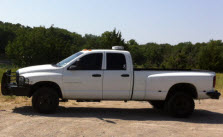A large number of roadside assistance needs are due to flat tires. To avoid flat tires, it’s a great idea to know what all those numbers printed on their sidewall means!
Need for Tires
Without tires, America’s economy would literally grind to a sudden and dramatic halt. Cars, trucks, vans, SUVs and heavy equipment have tires. We ask a lot of tires too. They need to deal with heat and cold as well as road hazards like nails, steel and glass all the while surviving stress and shock from hitting pot holes at high speed.
What is the Best & Highest UTQG Tire Rating?
Tires are rated under the ‘Uniform Tire Quality Grade’ or the UTQG. The UTQG has a numeric treadwear rating where the higher the number, the better the tire resists wear and lasts longer and two letter codes. The first is the traction rating with AA being the highest and a letter coded temperature rating with ‘A’ being the best. The temperature rating rates high speed performance such as driving on highways and on hot summer road surfaces without catastrophic failure. These ratings may provide some information when considering a tire purchase but may not mean much to the average buyer. Consumer ratings and other information assist tire buyers more.
Sidewall, Valve & Other Parts of a Tire
The outer circumference surface of the tire that makes contact with the road is referred to as the tread. It is made from elastomer copolymer with silica and carbon black usually added. The tread is molded over a nylon belt or crown over a steel mesh. Cords form the carcass ply and bead which is what holds the tire on the rim and providing an airtight seal. In tubeless tires, a rubber liner holds in the air. The sidewalls are the flexible sides of the tire that support the crown and tread and connect to the bead.
Radial VS Bias Ply VS Bias Belted Ply
Construction types of tires are radial, bias ply and bias-belted ply. Radials run the plies 90 degrees to direction of travel, or ‘radially’ from the tires center to the other side. Bias plys run the ply at angle relative to the tire center, with multiple ply layers running at an angle to each other. Because of this bias ply tires have a stiffer sidewall and the tread and sidewalls are interdependent. In radial tires, the sidewalls are independent of the belt and tread. Steel belts have a higher dissipation of heat and run cooler, while the sidewall is more flexible. Bias ply tires offer lower rolling resistance than do the non-belted tires. Radials on pavement outperform the bias ply tires offering lower rolling resistance, higher fuel mileage and a more comfortable ride. Off-road tires are generally steel belted radials with aggressive tread design. The modern radial tire is very flexible. It grows with the speed of the car; centrifugal forces cause the tire tread to swell.
Tire Wear Patterns Guide
Wear patterns of an under inflated tire appear around the edges of the tread, showing more wear than the center. This is caused by cupping of the tread as the under inflated tire makes contact with the ground. In contrast, over inflation wear is in the center of the tread while the edges show less wear. The manufacturers recommended pressure takes tire expansion into account due to running heat and centrifugal forces under highway conditions.
Flat Tire Changes, Roadside Assistance & More in Gainesville, Denton, Sanger, Aubrey & Era Texas
Information including on the sidewall is the UTQG rating, tire size and load, construction type and materials, as well as speed ratings. Also printed on the tire are tire pressure recommendations in US and Metric, DOT and International code compliance, the manufacturer’s name, relative symbol is present if a snow rating is available as well as manufacturer’s original equipment approval symbol. If you do experience a flat tire while driving, call A Plus Towing for emergency roadside service. Contact us today!






 Our son was stranded in Denton. We called and A Plus Towing was quick, professional and gave us a great price.
We would definitely recommend them and use them again! Great Job!
Our son was stranded in Denton. We called and A Plus Towing was quick, professional and gave us a great price.
We would definitely recommend them and use them again! Great Job!



